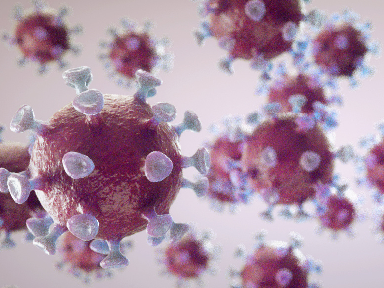worldpharmanewsMay 20, 2021
Tag: SARS-CoV-2 , Paul-Ehrlich-Institut , VSV
To stop the current SARS-CoV-2 pandemic, vaccines of high quality, safety, and efficacy are required. Scientists of the Paul-Ehrlich-Institut and the Ludwig Maximilian University at Munich have conceived in the laboratory a novel vector vaccine based on the vesicular stomatitis virus (VSV) with only one part of the spike protein as antigen. They have tested the characteristics of this vaccine in mice. The results have been published in PLOS Pathogens on 21 April 2021.
With the COVID-19 vaccines (mRNA vaccines or vector vaccines) available in Germany, few body cells receive foreign genetic information at a single instance. This information consists of mRNA (mRNA vaccines such as Comirnaty by BioNTech) or DNA transmitted by replication-deficient cold viruses (vector vaccines such as Vaxzevria by AstraZeneca). The genetic information is translated into proteins by the cells affected. They produce the spike protein of the corona virus, against which antibodies, among other things, are generated by the immune system. To ensure extensive supplies with effective vaccines worldwide, additional vaccine platforms are currently investigated and in development.

A team of researchers from the laboratories of Dr Christian Pfaller, head of research group "Pathogenesis of Viruses of the Airways" in Division "Veterinary Medicine" at the Paul-Ehrlich-Institut, of Professor Karl-Klaus Conzelmann at the Max von Pettenkofer-Institute of the LMU at Munich, and of Dr Christiane Riedel at the Institute for Virology of the University of Veterinary Medicine Vienna have designed an innovative vector vaccine based on the vesicular stomatitis virus (VSV). VSV cannot cause disease in humans. They designed a special single-round replicon vector, which circumvents the undesirable spreading of VSV particles in the body.
A chimeric "minispike" consisting of the receptor binding domain (RBD) of the SARS-CoV-2 spike protein (spike RBD), which is inserted into membrane envelopes with the aid of a sequence derived from the rabies virus, serves as antigen. The rabies virus, like VSV, is classified as a rhabdovirus. This design allows the simultaneous insertion of optimised antigens on the cell surfaces of the target cells of the vaccine and into the envelope of secreted non-infectious virus-like particles, which infer additional stimulation upon the immune system to produce antibodies against the spike-RBD - a combined "2-in1" approach. This allowed the research teams to investigate the hypothesis that by using such an improved RBD antigen presentation, it would not be necessary to use replicating vector vaccines or the complete spike protein antigen.
A single dose of the prototype of the replicon vaccine stimulated high titres of SARS-CoV-2 neutralising antibodies in mice and highly efficiently protected the animals from a symptomatic infection with SARS-CoV-2. A second immunisation further enhanced the virus neutralisation activity. The results show that single-round rhabdovirus RNA replicons expressing minispike proteins offer an effective vaccine platform. This platform could extend the existing repertoire of vaccines.
Hennrich AA, Sawatsky B, Santos-Mandujano R, Banda DH, Oberhuber M, Schopf A, Pfaffinger V, Wittwer K, Riedel C, Pfaller CK, Conzelmann KK.
Safe and effective two-in-one replicon-and-VLP minispike vaccine for COVID-19: Protection of mice after a single immunization.
PLoS Pathog. 2021 Apr 21;17(4):e1009064. doi: 10.1371/journal.ppat.1009064


Contact Us
Tel: (+86) 400 610 1188
WhatsApp/Telegram/Wechat: +86 13621645194
Follow Us:




 Pharma Sources Insight January 2025
Pharma Sources Insight January 2025


